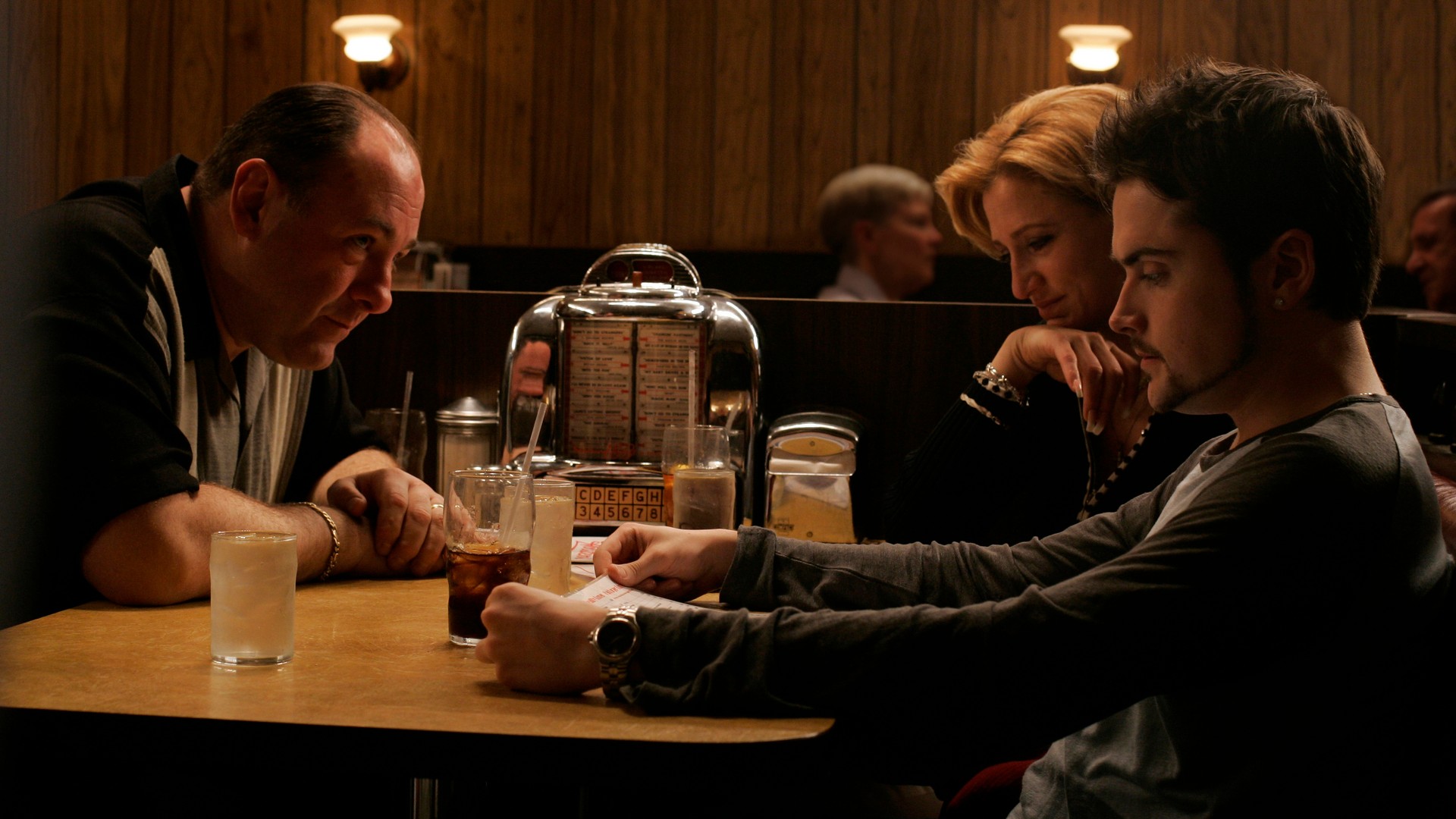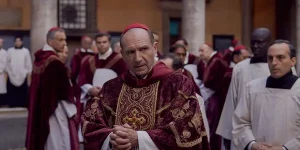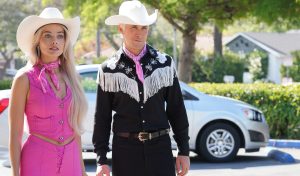
As is said with JFK, no American will ever forget where they were, or what they were doing, when Tony Soprano was shot in the series finale of The Sopranos. Recall is easier in the case of Tony, as every single witness was doing exactly the same thing at the time of his assassination: getting ready to kick their TVs into a million pieces.
The strange thing is that little of the raw emotion stirred up by the finale was connected with the actual assassination of Tony Soprano. Hardly anyone flinched, raged, gasped, or wept for the terminated mafioso. Do you know why? Because hardly anyone – myself included – even knew that it had happened. Over a million witnesses to a murder, and not one of them could give a credible statement or offer reliable testimony. Now that, my friends, is the definition of a perfect mafia hit.
It begs the question, though: if a mafia boss falls in a diner, and no-one is around to see it – or even hear it – does it make him dead?
He’s Dead? Really?
Yes, to get the most important bit out of the way: Tony Soprano is dead. Sopranos creator and guiding force David Chase has intimated as such throughout the years before all but confirming it to The Hollywood Reporter in 2021, saying “Because the scene I had in my mind was not that scene. Nor did I think of cutting to black. I had a scene in which Tony comes back from a meeting in New York in his car. At the beginning of every show, he came from New York into New Jersey, and the last scene could be him coming from New Jersey back into New York for a meeting at which he was going to be killed.”
Why then did Chase and the show ultimately present Tony’s death in such an ambiguous fashion? That requires further analysis.
Let’s just remind ourselves how – to use street parlance – the final scene of The Sopranos ‘went down’: Tony (James Galdolfini) arrives at Holsten’s diner in Bloomfield, New Jersey, and selects Journey’s “Don’t Stop Believin’” from the juke-box console at his table. One by one, the other members of his immediate family arrive – except for Meadow (Jamie-Lynn Sigler) – and they start to eat onion rings and indulge in small talk. Meadow’s a bit late, and seems to be having trouble parking her car. Just as Meadow reaches the diner’s door and pushes it open, Tony looks up and… blackness. Show over.
Chase decided to end his magnum opus with that sudden cut to black, and then allowed that blackness to linger for ten agonizing seconds, he convinced millions of HBO subscribers across the continent that their TV sets had committed electronic hara-kiri, or else their signal had cut out at the worst possible moment. It quickly dawned on them, once the end credits started rolling, that not only were their sets and signals in perfect working order, but also that this was the ending David Chase had intended.
This was the ending … This was the ending? Americans stared slack-jawed at their screens – initially too stunned to be angry – wondering if the invisible middle-finger of David Chase had been pointing towards them through the darkness of those final seconds. And then, for the second time in as many minutes, they got ready to kick their TVs into a million pieces.
It took me a while to realize that Tony was a goner. Even still, at the time of first viewing I wasn’t one of those inspired to mete out toe-in-the-TV justice on account of the ending. I trusted David Chase so implicitly that even though I didn’t – at the time – fully comprehend what he’d constructed, I knew he’d perpetrated an act of genius.
The Sopranos was so deliciously bold, fresh, funny, complex, and authentic that, for me, it rendered most other dramas on television unwatchable. This show – that had so honestly and meticulously deconstructed man, society, psychiatry, family, America, anger, love, death, life, guilt, and hate – would never, and could never, end with a ‘fuck you’ to its audience.
And it didn’t.
There’s no Da Vinci Code at work here, people. You won’t have to quest for ancient manuscripts or spend a few months repelling mad monks in order to see the bullet-shaped truth of The Sopranos’ final scene. It’s more like a Magic Eye drawing. Tony Soprano was shot. You just have to concentrate to bring it all into focus.
It Goes On, and On, and On, and On?
“You probably don’t even hear it when it happens, right?” – Bobby Baccala
Being something of a moron, I initially believed that the final scene and its cut to black signified that Tony’s life would go on, and on, and on, and on, but he’d be forever cursed to see a bullet or a set of handcuffs on the periphery of every moment.
We already knew Tony spent his life looking over his shoulder. He’d been arrested multiple times, and had a gun charge hanging over him that wouldn’t go away. Many of his guys had flipped. Some had been seduced by the allure of Johnny Sack’s former family in New York. People had tried to kill him. Carmela herself gave voice to this anxiety in the episode “Chasing It,” when she said to Tony, “I worry, I do. You already got shot. Now you won’t even go down to get the paper. Who is out there? What are the million other possibilities? The FBI waiting to take you away? You eat, you play, and you pretend there isn’t a giant piano hanging by a rope just over the top of your head every minute of every day.”
It’s an insult to believe that Chase would’ve summed up his entire series with a sentiment already expressed by one of the show’s main characters only a few episodes prior to the finale. Besides, Chase ending The Sopranos with the message that mafia boss Tony has to stay on his guard would be like Vince Gilligan ending Breaking Bad with the message “cancer’s not very nice.”
What Really Happened
“They wanted to know that Tony was killed. They wanted to see him go face-down in linguini, you know? And I just thought, ‘God, you watched this guy for seven years and I know he’s a criminal. But don’t tell me you don’t love him in some way, don’t tell me you’re not on his side in some way. And now you want to see him killed? You want justice done? You’re a criminal after watching this shit for seven years.’ That bothered me.” – David Chase in 2021.
There is an article online called ‘The Sopranos: Definitive Explanation of “The END”‘ that reads like a university dissertation. The author is clearly a massive fan of The Sopranos, and provides an analysis of the ending so thorough that it would probably take less time to watch the entire boxset of the series than it would to read the staggering dissection from start to finish. This was the tome that opened my eyes to Chase’s master-stroke. Once I’d absorbed this interpretation, no other interpretation made sense, and I kicked myself for being blind to its genius and logic. In the concluding section of this feature I’m going to distil its main points, while adding a little of my own flourish. Think of it as me standing on the shoulders of giants – those of Chase, and those of the insightful blog author – all the better to spread the revelations of my Sopranos‘ sermon.
So let’s revisit the final scene one more time, and this time add some flesh to the synopsis…
Tony sits in his booth, looking resigned and lethargic. He’s less the vigilant mob boss and more just another regular Joe; one of a million over-weight, middle-class, middle-aged men sitting in diners up and down the country waiting for the twin comforts of onion rings and family. There are pictures arranged on the wall behind Tony that serve as a sly wink to the audience, particularly the one of the old mansion house that looks eerily similar to the one from his own near-death coma dreams. Tony selects Journey’s “Don’t Stop Believin’” from the jukebox.
Here’s where Chase starts to get clever. Each time the diner’s door opens, its bell rings and we see Tony looking up in the direction of the noise. In the following shot we see whomever’s coming through the door from Tony’s point of view – or through his eyes, if you like. The bell establishes a pattern of shots and elicits from us a Pavlovian response. We learn to anticipate the sequence: the bell rings, Tony looks up, and we know that whatever immediately follows those raised, expectant eyebrows is whatever Tony is seeing at that exact second. Ding, raised brows, eyes, ding, raised brows, eyes.
Carmela (Edie Falco) arrives first, followed by AJ (Robert Iler), and all around them, as they sit at their booth, dance the phantoms of Tony’s past: guys who look like guys who’ve tried to kill Tony; guys who look like guys Tony has killed. We know something’s wrong, but we don’t know what. The entire scene is a rising, silent scream of tension. Every moment and movement is pregnant with dread. We know – we just know – that something big – something bad – is going to happen. These are, after all, the dying minutes of the final scene, of the final episode, of the final season. This is it… Tick, tick, tick. Ding, raised brows, eyes. Tick tick tick.
Another man enters the diner at the same time as AJ; a rather twitchy guy in a Members’ Only jacket, of the kind favored by the late Eugene Pontecorvo. He perches himself at the bar, and steals a shifty glance back and sideways in Tony’s direction, obviously taking a keen interest in the don’s seating arrangements. The man then gets up from the bar and walks past Tony’s table towards the bathroom, and as he does so the camera follows him with a tracking shot – the only such shot in the scene. This is Chase’s way of saying: ‘Watch this guy. I wouldn’t be imbuing him with this much significance if he was just going for a piss.’ Besides, The Godfather has taught us how dangerous it can be when a connected man visits the bathroom in a diner.
Even though I didn’t ‘get’ the ending at first – and mistakenly believed in the “life goes on” interpretation – Meadow’s lateness always played on my mind. I knew there was something more to it. And, boy, there was. Take a look back at that tracking shot, and notice where Meadow would have been sitting had she arrived at the diner on time. Also bear in mind Tony’s words to Carmela in the previous episode: “Families don’t get touched, you know that.” Think about the line of sight the Members’ Only guy will have upon returning from the bathroom, with Meadow out of the picture.
Meadow finishes parking, and we see her dashing towards the diner. Any second now we know she’s going to push through that door, and the ding, raised brow, eyes sequence is going to repeat itself. So when that bell dings – or perhaps tolls – for the final time, and we see Tony’s eyebrows and then… nothing… nothing… we’re forced to conclude that this “nothing” is what Tony is seeing at that exact moment. And under what circumstances other than death would a man’s point of view change so swiftly and unexpectedly to nothing? To blackness?
David Chase Did it His Way – The Only Way
In season four, Tony has a conversation with Dr. Melfi in which he sums up the problem that must have faced David Chase as he contemplated the final episode: “There’s two endings for a guy like me. Dead or in the can. Big percent of the time.”
In fact, those two scenarios were the only viable options open to Chase, and he knew it.
So what could Chase do? If The Sopranos had ended with a jail cell door clunking shut on Tony, we, the audience, would have reacted with a shrug. “Oh, the boss of a criminal organization has ended up in jail. What an unexpected and clever twist.”
How about dead? Sure, it would have been exciting and horrifying in equal measure for Tony go down in a hail of bullets, but as endings go it wouldn’t have been particularly satisfying or original. Like junk food, it would have sated us for precisely ten seconds, and then we would have been left feeling sick and bloated. Besides, the bloody violence of such an act would’ve sent a mixed message to those of us who’d let Tony under our skins for the best part of a decade.
Instead, the sudden and bleak finality of that lingering darkness forced us to contemplate the fragility of life, and the ubiquity of death. How, in the end, maybe it’s only the moment that matters. Or maybe the little moments… that were good. I don’t know. Perhaps Livia Soprano was right, and it really is “all a big nothing”. The Sopranos, like life itself, takes more delight in raising questions than giving answers.
But there’s no question about the meaning of those final seconds. We – the viewer, the fan – got to do what we had always done – what we’d always loved doing – over the course of six glorious seasons: see the world through Tony Soprano’s eyes. Just a little more literally – and finally – this time.
The post The Sopranos: Explaining the Final Scene appeared first on Den of Geek.






